Find the weight of the suspended body if the tension in the diagonal string is 20 N
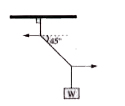
141 N
14.1N
1.41N
20 N
The correct Answer is:C
Step by step video & image solution for Find the weight of the suspended body if the tension in the diagonal string is 20 N by Physics experts to help you in doubts & scoring excellent marks in Class 11 exams.
Updated on:21/07/2023Similar Questions
A uniform string of length 10m and mass 20 kg lies on a smooth frictionless inclined plane. A force of 200N is applied as shown in the figure.
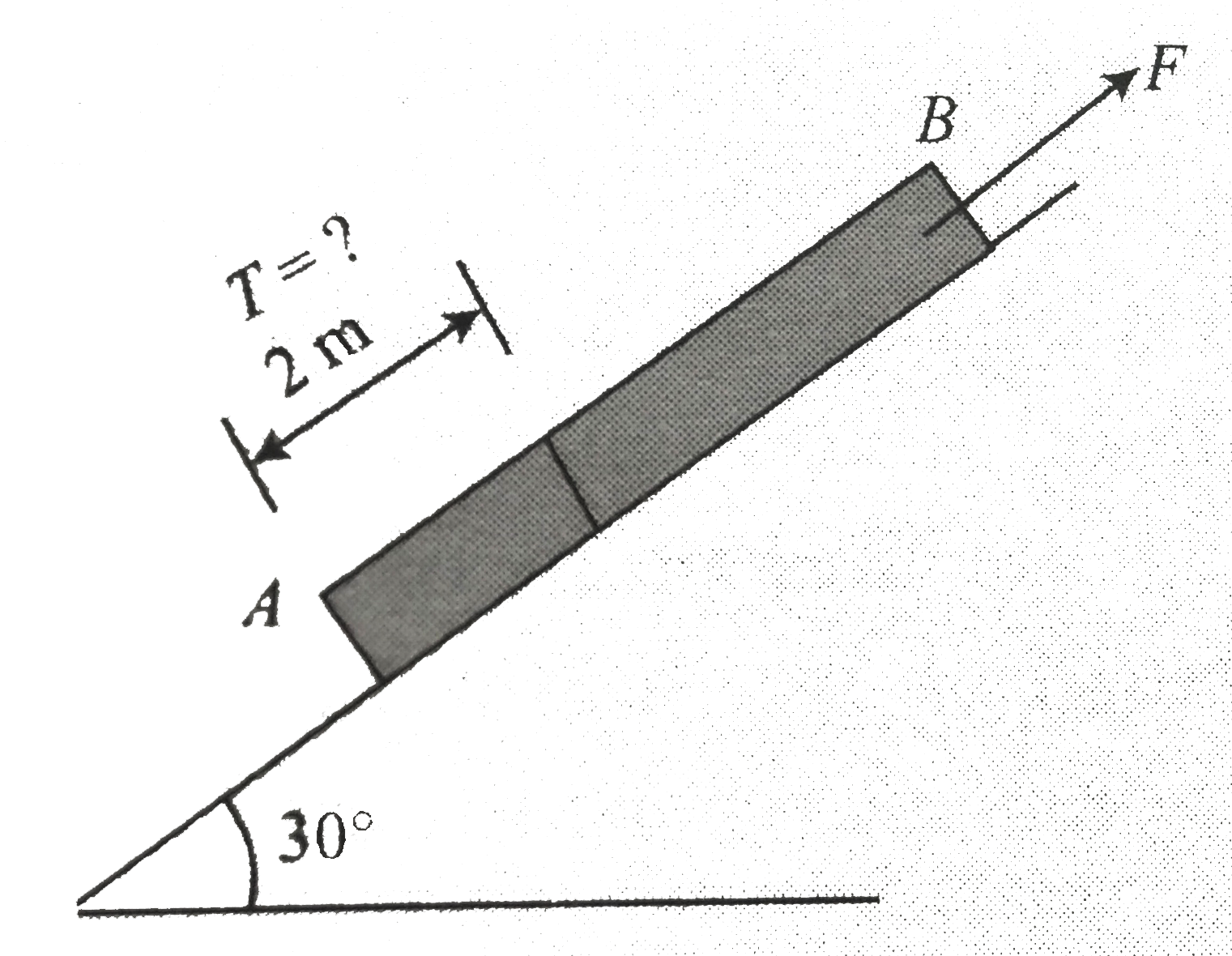
(a) Find the acceleration of the string.
(b) Find the tension in the string at 2m from end A.
View SolutionA particle of mass m is suspended from a ceiling through a string of length L. The particle moves in a horizontal circle of radius r. Find a. the speed of the particle and b. the tension in the string. Such a system is called a conical pendulum.
View SolutionA particle of mass m is suspended from a ceiling through a string of length L. The particle moves in a horizontal circle of radius r. Find a. the speed of the particle and b. the tension in the string. Such a system is called a conical pendulum.
View SolutionA heavy particle hanging from a string of length I is projected horizontally with speed √gl . Find the speed of the particle at the point where the tension in the string equals weight of the particle.
View SolutionA sphere of mass 20 g is whirled around in a horizontal circular path on the end of a string, the other end of which is stationary. If the tension in the string is 12.62 N, calculate the length of the string.
View SolutionA body of weight 2 kg is suspended as shown in the figure. The tensionT1 in the horizontal string (in kg wt ) is
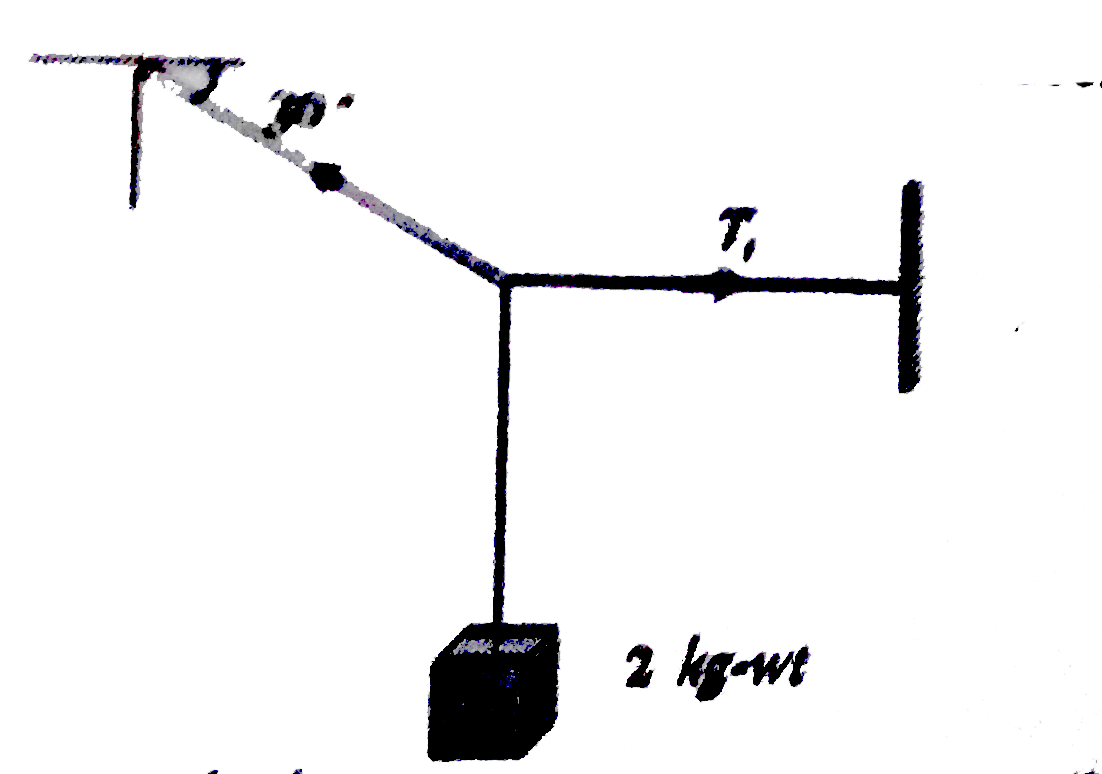
View SolutionA body of weight 2 kg is suspended as shown in the figure. The tension T2 in the horizontal string (in kg wt) is :-
View SolutionAll the string in figure are massless. Tension in the horizontal string is 30N. Find W.
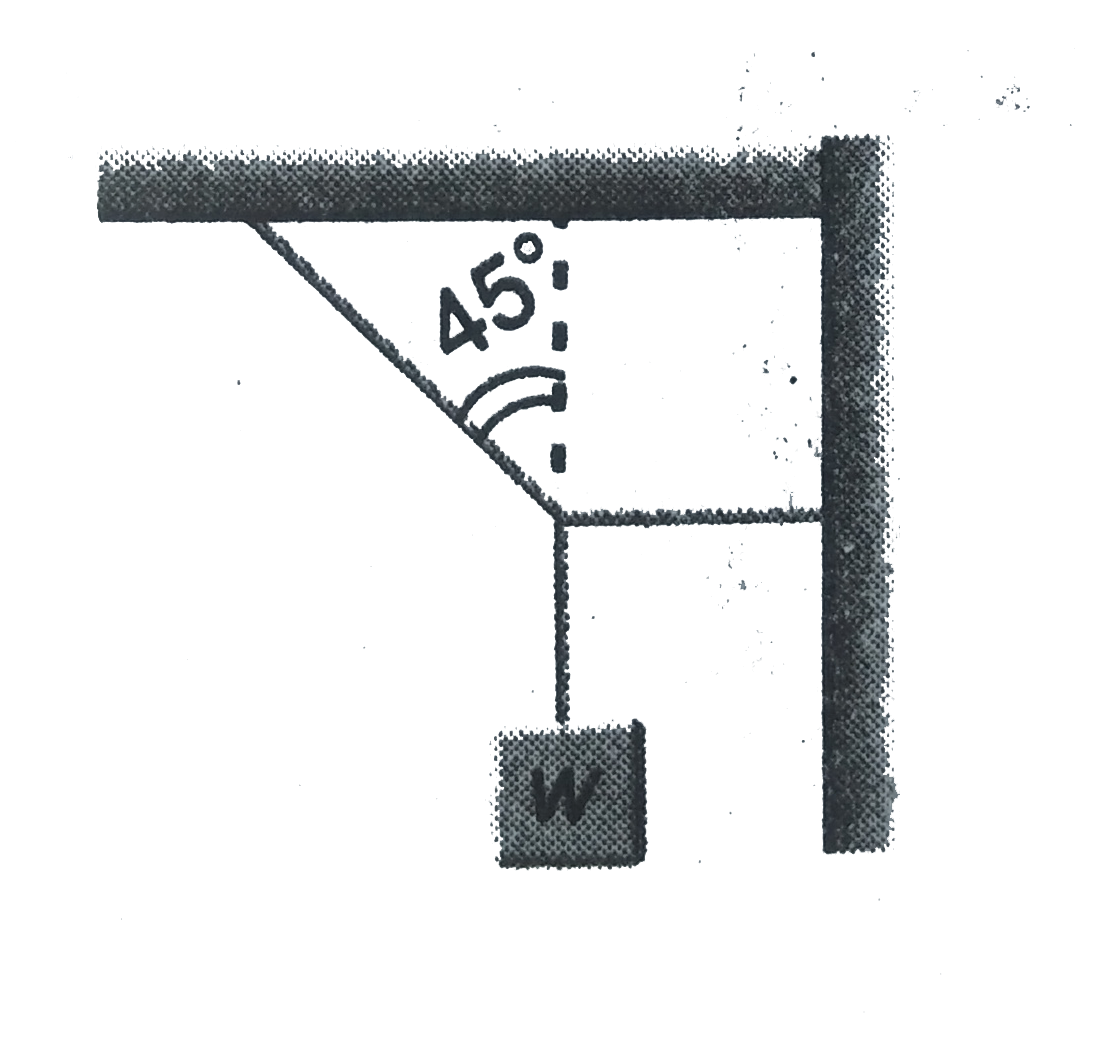
View Solution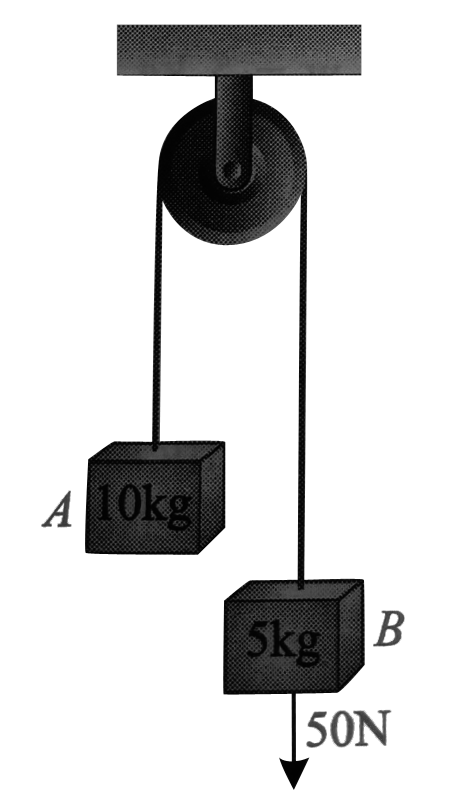
Find out the acceleration of the blocks and tensions in the strings.
View SolutionFind the tension in the strings AC and BC shown in figure.
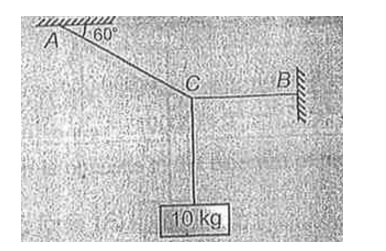
View Solution
